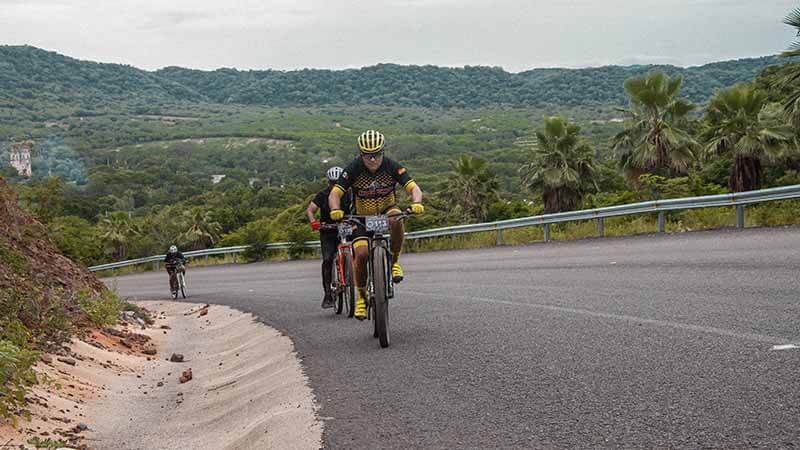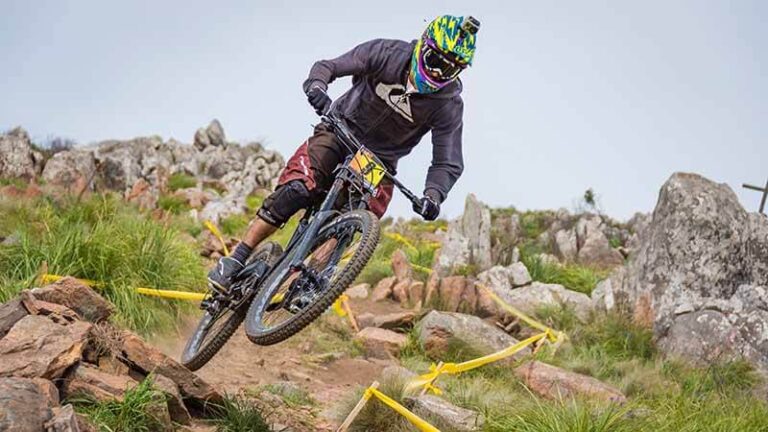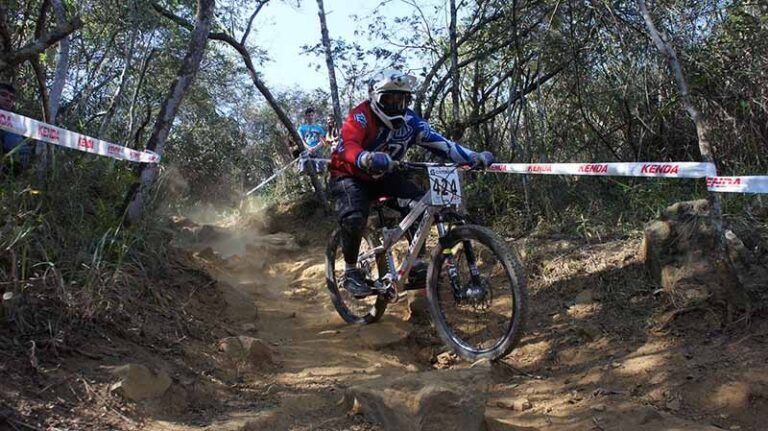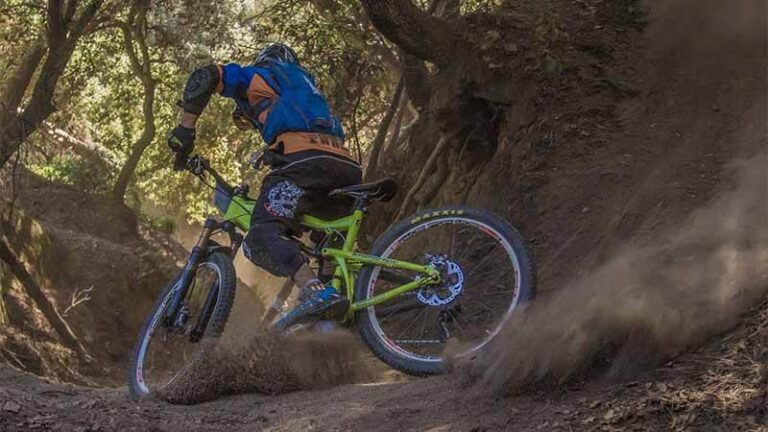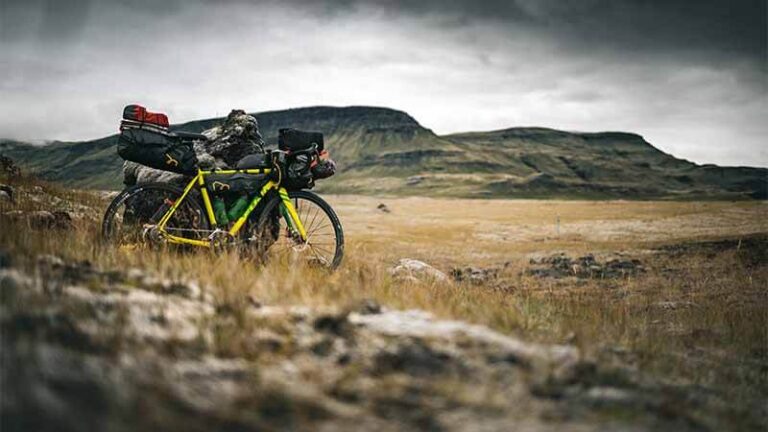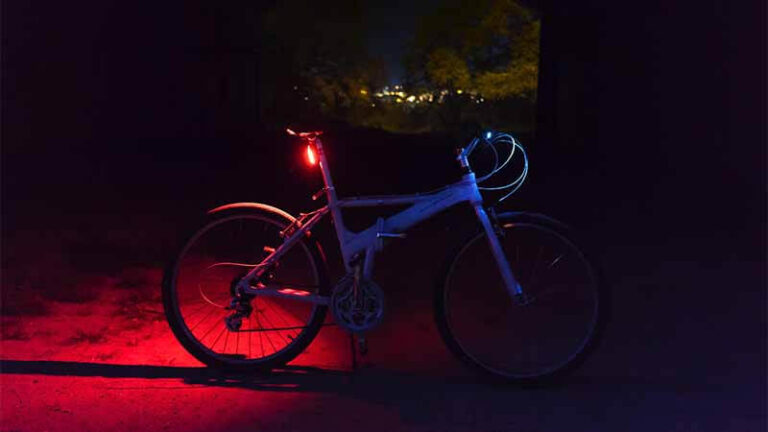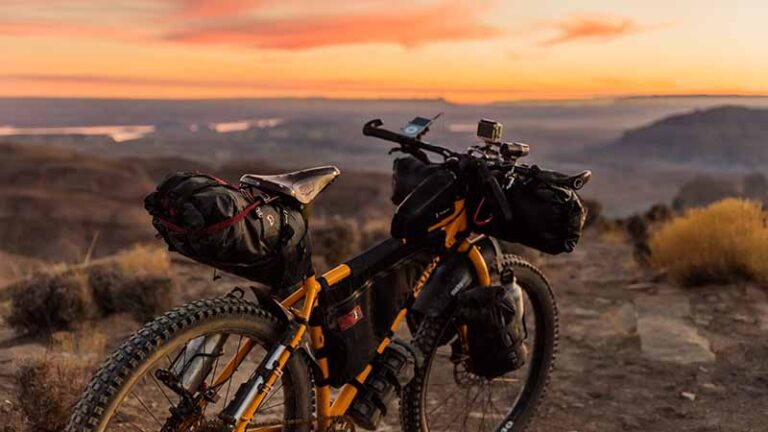5 Best Mountain Bike Pedals (Affordable & High Quality)
It’s exhilarating to ride a mountain bike into the vast outdoors, immersing oneself in nature’s splendor while tackling difficult terrain. Whether you’re an experienced rider or a passionate beginner, your mountain bike pedals play a critical role in your bicycling performance and control.
Mountain bike pedals are the key link between you and your trusted two-wheeled companion, ensuring effective power transfer, stability, and the ability to confidently conquer various courses. Finding the best mountain bike pedals might be difficult with so many alternatives on the market.
Fear not, avid riders, as we begin on an exciting expedition to unearth the best pedals meant to improve your off-road adventures. In this blog post, we will look at a variety of high-quality mountain bike pedals and evaluate their features, performance, and durability. We have you covered whether you prefer the adrenaline rush of downhill descents or the endurance rigors of cross-country routes.
What are the Best Mountain Bike Pedals?
Here are my top picks of the best mountain bike pedals available for experiencing safe and comfortable riding.
1. SHIMANO Mountain Bike Pedals ($58)
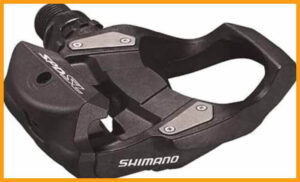
The incredible “SHIMANO Mountain Bike Pedals” are here to revolutionize your riding experience. These pedals have been painstakingly designed with a variety of features to improve performance, comfort, and convenience for riders of all skill levels.
These pedals are ideal for beginning riders since they have a lighter spring tension that has been tuned for easy clipping in and out. You may firmly engage the pedals with a larger entry target, even when rolling away from a stop. This smooth transition allows you to concentrate on the enjoyment of the ride rather than your equipment.
The extra-wide platform of the PD-RS500 pedals increases power transfer and pedaling stability. These pedals ensure that every ounce of effort you spend is aimed towards propelling you forward by efficiently transferring your energy to the bike. As you tackle difficult terrains and test your boundaries, you will gain new levels of power and efficiency.
It’s never been easier to engage and disengage the cleat and pedal. Because of their sophisticated design, these pedals require little effort, allowing you to clip in and out with ease. This function is especially useful for long rides or tricky portions when fast foot adjustments are required.
Say goodbye to the hassle of carrying specific cleat covers on your rides. The SHIMANO Mountain Bike Pedals’ wide, low-profile cleats allow for confident walking without the need for additional covers. You can experience the flexibility of comfortable and natural walking whether you’re stopping for a mid-ride coffee break or wandering off the beaten route.
These pedals significantly improve your pedaling ability because of their sturdy surface and larger contact area. Feel the difference as your stability and control improve, allowing you to push harder and achieve ideal power transfer. Your pedaling efficiency soars, resulting in a more enjoyable and intense ride.
Embrace the strength of the SHIMANO Mountain Bike Pedals to realize your full trail potential. Allow these pedals to be your trusty companion as you embark on exciting adventures, knowing they will enhance your pedaling efficiency, power transfer, and overall performance. SHIMANO’s unrivaled craftsmanship and engineering expertise will elevate your riding experience.
2. OneUp Components Mountain Bike Pedals ($39.50)
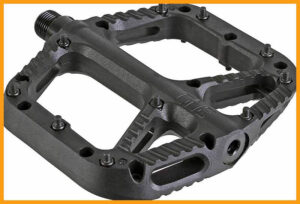
The OneUp Components Mountain Bike Pedals include a slew of features that will take your biking to new heights. These pedals have a strong design and 10 rear-loading Steel pins on each side that are snugly secured with Nyloc nuts. This provides outstanding grip and stability, helping you to tackle difficult trails with confidence.
The pedals use a DU plus cartridge bearing axle system for smooth and dependable functioning. This revolutionary design enables effective power transfer, increasing pedaling efficiency and overall riding enjoyment. These pedals provide the necessary support whether you’re climbing steep inclines or descending at rapid speeds.
The slim leading-edge chamfered shape of these pedals is a distinctive feature. Because of their careful engineering, they can easily deflect off impediments like rocks and roots, minimizing unexpected encounters that could hinder your progress. You can cross hard terrain with confidence, knowing that these pedals are made to withstand the trials ahead.
The OneUp Components Mountain Bike Pedals’ wide platform design improves stability. It provides a sturdy and comfortable basis for your feet, allowing you to push your limits and engage in aggressive riding maneuvers. The larger platform area also helps to uniformly transmit pressure, decreasing foot strain during lengthy rides.
These pedals have a curved shape that delivers the ultimate connected experience in addition to their utilitarian design. They adjust to the shape of your feet effortlessly, resulting in a natural and intuitive contact between you and your bike. This connected feel improves control and maneuverability, allowing you to make quick adjustments.
Overall, the OneUp Components Mountain Bike Pedals are an excellent option for riders looking for high performance and dependability. These pedals provide an incredible riding experience that will boost your confidence and enjoyment on the trails thanks to their exceptional grip, smooth bearings, obstacle-deflecting design, wide platform, and connected feel.
3. FOOKER Mountain Bike Pedals ($26.99)
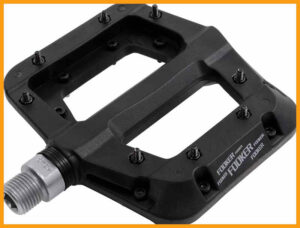
The FOOKER Mountain Bike Pedals are a long-lasting and dependable option for any passionate cyclist. These pedals are built to survive the harshest terrains and circumstances, featuring a durable nylon fiber surface and a high-strength Cr-Mo spindle.
These pedals have a spacious platform that is ideal for a comfortable ride, measuring 4.30 inches in length, 3.94 inches in width, and 0.98 inches in height. They are lightweight yet strong, weighing only 0.79 pounds in each pair, and will not weigh you down during your bicycle travels.
These pedals are notable for their impressive shock-proof, abrasion-resistant, and corrosion-resistant capabilities. These pedals can withstand any bumps and hurdles that come your way, giving a smooth and reliable ride.
The FOOKER Mountain Bike Pedals promote safety as well. Their wide tread and anti-skid nails on both sides provide exceptional foot grip and security. You can trust that your feet will keep firmly in place, even in muddy circumstances, whether you’re conquering steep slopes or navigating slippery ground.
Furthermore, these pedals are ergonomically built. The CR-L and CR-R labels designate the left and right pedals, respectively, making installation simple. The sealed-bearing construction gives an extra degree of protection, keeping the spindles dry and dust-free. This technology not only extends the life of the pedals but also minimizes potential concerns like noise and poor performance.
4. ROCKBROS Mountain Bike Pedals ($25.99)
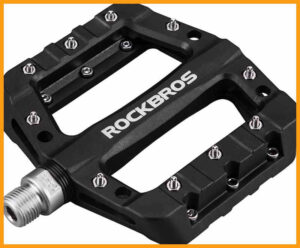
Any serious mountain cyclist should own the ROCKBROS Mountain Bike Pedals. These pedals are built to handle the most difficult terrain and deliver an outstanding riding experience.
These pedals have a tough nylon fiber surface and are extremely strong and durable.
They are designed to withstand shocks, ensuring that they remain intact even on tough and hilly trails. Their exceptional resistance to wear and corrosion guarantees that their quality is maintained throughout time.
When it comes to mountain riding, safety is everything, and these pedals provide on that front. They have anti-skid nails on both sides to provide a firm hold for your feet. Even if the pedals are caked in muck after a muddy ride, you can be confident that your feet will stay firmly in position, giving you the confidence to tackle difficult pathways.
The ROCKBROS Mountain Bike Pedals provide a 4.1-inch wide platform for a pleasant and stable riding experience. Despite their sturdy build, these pedals are remarkably light, weighing only 0.8 pounds. This lightweight structure, along with an ergonomic shape, guarantees that your lengthy rides are both pleasant and efficient.
These pedals have high-speed DU bearings to improve pedaling efficiency even further. These bearings reduce friction and allow for smooth revolutions, allowing you to get the most out of every pedal stroke. This function not only boosts performance but also helps to alleviate tiredness after long rides.
These pedals are simple to install. Simply attach the CR-L pedal to the left side of your bike and the CR-R pedal to the right. The sealed-bearing construction protects the pedals from water and dust, avoiding any potential noise or functioning difficulties. This innovation increases the pedals’ lifetime, making them a dependable choice for all of your mountain bike trips.
The ROCKBROS Mountain Bike Pedals are a wonderful choice if you seek long-lasting, high-performance pedals with exceptional grip and comfort. Prepare to confidently attack the trails and enjoy a riding experience like no other.
5. GEWAGE Mountain Bike Pedals ($24.69)
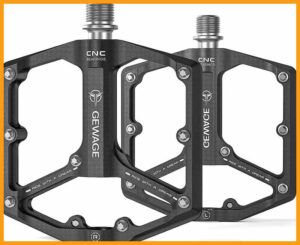
The GEWAGE Mountain Bike Pedals are an excellent complement to any cyclist’s equipment. These pedals are designed to be lightweight without sacrificing durability, weighing only 332 grams. They are made from a tough aluminum alloy composite platform and are designed to resist the demands of severe off-road activities.
These pedals provide a stable and sturdy grip with a platform size of 100 x 104mm and a low profile of 14mm. The slanted leading edges help to reduce pedal strikes, helping you to ride even the most difficult terrain with confidence.
Whether you’re climbing tough climbs or descending quickly, these pedals keep your feet firmly in place, instilling trust and confidence. These pedals include 16 interchangeable pins per pedal (8 per side) and provide excellent grip and foot placement. Every stride you take on the trail feels firm and reliable, which improves your entire riding experience.
To avoid confusion during installation, the pedals are clearly labeled “L” and “R,” signifying the left and right sides. They are simple to install, requiring only an 8mm Allen key. You’ll be ready to hit the trails in no time, enjoying the performance these pedals provide.
The presence of three sealed bearings is one distinguishing feature of these pedals. This architectural aspect protects against water and dust, minimizing the likelihood of noise and other potential difficulties. You may ride with confidence knowing that your pedals are protected from the elements.
These pedals, meticulously created with CNC-integrated aluminum alloy material, provide a soothing sense of security. The high-quality construction ensures their lifespan, allowing you to ride for hours without stress. The spindle, composed of chrome-molybdenum steel, increases the strength and endurance of the pedals, guaranteeing they can resist the demands of off-road riding.
The GEWAGE Mountain Bike Pedals are an example of precise design and superior craftsmanship. Their lightweight design, tough durability, and outstanding grip make them a trustworthy partner on any terrain. Feel the confidence and control they provide you, and take your biking experiences to new heights.
What are the different types of mountain bike pedals?
Mountain bike pedals are available in a variety of styles, each with its own set of benefits and qualities. The following are the most common mountain bike pedals:
- Platform Pedals: The most basic type is platform pedals, often known as flat pedals. They have a broad, flat surface area that gives your feet a secure footing. Platform pedals are often made of metal or composite materials, with pins or grooves for additional grip. They are appropriate for riders who want to wear conventional shoes or who prioritize smooth foot movement and quick pedal engagement and disengagement.
- Clipless Pedals: Contrary to its name, clipless pedals require you to clip in with special cycling shoes that have appropriate cleats. The cleats on the bottom of your shoes are attached to the pedal by a mechanism in these pedals. Clipless pedals provide a secure connection between the rider and the bike, allowing for improved control and efficient power transfer. They are widely used in mountain biking sports such as cross-country, trail riding, and enduro.
- Two-Bolt Cleats: The two-bolt system, commonly known as SPD (Shimano Pedaling Dynamics), is the most prevalent form of cleats used with mountain bike clipless pedals. When compared to road bicycle cleats, these cleats are recessed into the sole of the shoe, making them easier to walk in.
- Four-Bolt Cleats: Four-bolt cleats are used on some mountain bike pedal systems, such as those made by Crankbrothers. These cleats have a bigger contact surface and are often utilized for gravity-based or downhill riding.
- Clipless/Platform Combo Pedals: These pedals incorporate the advantages of both clipless and platform pedals into a single design. They include a clipless system on one side and a flat platform on the other, giving riders the option of riding clipped-in or with ordinary shoes. These pedals are adaptable, making them ideal for riders who want to swap between clipless and platform setups based on terrain or personal choice.
It is important to note that personal preference plays a vital factor in selecting the appropriate sort of pedal. The decision is influenced by factors such as riding style, terrain, skill level, and comfort. Many riders try out various pedal types to discover the one that best fits their needs and riding style.
Can you use mountain bike pedals on a road bike?
Yes, mountain bike pedals can be used on a road bike, albeit this is not the most popular setup. The primary distinction between mountain and road bike pedals is the type of cleats used and the method by which the cleats attach to the pedals.
Mountain bike pedals often have a two-bolt cleat system, such as the SPD (Shimano Pedaling Dynamics) system, which facilitates walking and off-road agility. Road bike pedals, on the other hand, typically employ a three-bolt cleat system, such as Look or Shimano SPD-SL, which gives a greater contact area and a more stable connection between the shoe and the pedal.
You have two possibilities if you wish to utilize mountain bike pedals on a road bike:
- Use two-bolt cleats on mountain bike shoes: If you already have mountain bike shoes with suitable cleats, you can attach mountain bike pedals that match the cleat system on your shoes. This configuration is suitable for recreational road riding, commuting, or touring, although it may not give the same level of power transmission and efficiency as road-specific pedal systems.
- Use an adapter: Some firms make adapters that allow you to change a three-bolt cleat system on road shoes to a two-bolt cleat system. These adapters usually feature three holes for attaching to the cleat holes on road shoes and a smaller two-hole pattern for mounting mountain bike cleats.
Keep in mind that using mountain bike pedals on a road bike can have an impact on your pedaling efficiency and overall performance, especially if you’re doing high-intensity road cycling or competing in events.
Road pedals are intended to maximize power transfer while also providing a sturdy foundation for effective pedaling. As a result, if you’re primarily interested in road riding, it’s typically suggested that you utilize pedals developed exclusively for road bikes.
What is the purpose of a cage on some mountain bike pedals?
A cage on some mountain bike pedals is designed to provide additional support and stability for the rider’s foot. These cages are normally made of metal or plastic and are mounted to the front of the pedal.
A pedal cage’s principal function is to keep the rider’s foot on the pedal, especially during rough terrain or intense riding. The rider can secure their foot to the pedal and keep it from falling off by placing the front half of their foot into the cage. This is especially handy while riding through rocky routes, jumping, or doing intricate feats requiring precise control.
Pedal cages can also benefit riders who opt not to utilize clipless pedals and cycling shoes. when not as secure as clipless systems, cages connect the foot to the pedal, allowing for more efficient power transfer when pedaling. They are also useful for riders who need to swiftly place their foot down because they can easily release their foot from the cage by pushing backward.
However, pedal cages are no longer as common as they once were, as clipless pedal systems have achieved universal acceptance in mountain biking. Clipless pedals use a clip attached to the cycling shoe to provide a more secure and efficient connection between the foot and the pedal. Pedal cages, however, have their uses and are chosen by certain riders who value the ability to rapidly withdraw their foot from the pedal or prefer a simpler and more accessible solution.
What is the difference between mountain bike pedals and road bike pedals?
Mountain bike pedals and road bike pedals are designed and function differently to meet the needs and demands of each form of cycling. Here are some important distinctions:
- Cleats: Most road bike pedals have a three-bolt cleat system, whereas mountain bike pedals have a two-bolt cleat system. Cleats are affixed to cycling shoes and interact with the pedals to form a stable connection between the rider and the bike.
- Pedal Design: Compared to mountain bike pedals, road bike pedals are often larger and have a wider platform. This design has a greater contact area with the shoe, which distributes pressure more evenly and improves pedaling efficiency. Mountain bike pedals, on the other hand, are often smaller and more recessed in order to avoid becoming blocked with mud, dirt, or debris encountered on off-road paths.
- Float: The amount of rotational movement accessible to the foot when hooked into the pedal is referred to as float. Road bike pedals frequently have limited float or even fixed positions, allowing for more efficient power transfer and improved pedaling technique. Mountain bike pedals typically have more float to handle the more dynamic and diverse movements required for off-road riding, such as navigating obstacles and challenging terrain.
- Engagement and Release: Road bike pedals are often stiffer and require a more precise movement of the foot to clip in and out. This configuration ensures a secure connection and reduces unintended disengagement while cycling at high speeds on the road. Mountain bike pedals have a looser engagement mechanism, which allows for faster and easier foot entry and exit, which is useful in challenging off-road circumstances where riders must respond quickly.
- Shoe Compatibility: The sole patterns and compatibility with the different pedal systems vary between road and mountain riding shoes. The sole of road cycling shoes is smooth and stiff, allowing for efficient power transfer on smooth roads. The treaded sole of mountain biking shoes gives grip and traction whether walking or handling the bike on uneven terrain.
It’s crucial to remember that pedal types differ and have overlapping functionality, and some pedals are built for hybrid or multi-purpose use. The decision between mountain bike pedals and road bike pedals is determined by the rider’s planned riding discipline and personal preferences.
Do mountain bike pedals really make a difference?
Yes, mountain bike pedals can improve your riding experience significantly. The pedals you choose can have an impact on your off-road performance, comfort, and control. Here are a few examples of how mountain bike pedals can help:
- Foot Retention: Mountain bike pedals use a variety of devices to keep your feet firmly engaged with the pedals. Flat pedals with pins, clipless pedals, and platform pedals with toe clips/straps are all common styles. These options give varying degrees of foot retention and can assist in keeping your feet from slipping off the pedals during tricky or rocky terrain parts.
- Power Transfer: Clipless pedals employ a cleat system attached to your cycling shoes to transfer power from your legs to the pedals. They let you exert force throughout the pedal stroke, increasing your pedaling efficiency and overall performance. This is especially useful when sprinting or climbing steep inclines.
- Control and Stability: Mountain bike pedals can improve your riding control and stability. Clipless pedals attach your feet to the bike securely, allowing you to maneuver more accurately and maintain control over tough terrain. Flat pedals with pins provide good grip and stability as well, especially when paired with proper shoes with sticky rubber soles.
- Riding Style and Preference: Different riders have different riding styles and preferences, and the pedals they use can meet those choices. Flat pedals provide freedom and ease of movement for some riders, while clipless pedals provide a secure connection and efficiency for others. When selecting the perfect pedals for you, keep your riding style, terrain, and personal comfort in mind.
Finally, the choice of mountain bike pedals is determined by your own riding needs and tastes. It can be helpful to experiment with numerous types of pedals to see which ones best suit your riding style, comfort, and performance goals.
Which mountain bike pedal is most suitable for racing?
Mountain bike pedals for racing are frequently chosen based on personal preference and riding style. However, racers often utilize the following styles of pedals:
- Clipless Pedals: These pedals include a cleat system that connects to your cycling shoes and allows you to clip in and out. As they securely link your feet to the pedals, they provide excellent power transfer, efficiency, and control. Shimano SPD, Look, and Crankbrothers are all popular clipless pedal systems.
- Platform pedals are flat pedals that do not require any specific bicycle shoes or cleats. They provide a broad and sticky base for your feet and are ideal for tricky terrain and circumstances requiring fast foot placement. Some platform pedals have pins for increased grip. Platform pedals with exceptional performance include the DMR Vault, Race Face Chester, and Crankbrothers Stamp.
- Combination Pedals: Also known as dual-sided pedals, combination pedals have a platform on one side and a clipless mechanism on the other. These pedals allow you to use them with cleated shoes for effective pedaling or with conventional shoes for short rides or tough portions requiring frequent foot adjustments. Shimano SPD pedals, which have a platform on one side and an SPD mechanism on the other, are popular in this category.
Do mountain bike pedals improve your performance?
Yes, mountain bike pedals can help you perform better in a variety of ways. The sort of pedals you use on your bike can affect power transfer, control, and efficiency.
Mountain bike pedals are classified into two types: platform pedals and clipless pedals. Let’s take a look at how each type can affect your performance:
- Platform Pedals: These are flat pedals with a wide surface area for your feet. Riders that prefer a more casual riding style or participate in downhill or freeride disciplines are likely to use them. Platform pedals have the following advantages:
- Control and Confidence: Platform pedals allow you to effortlessly remove your feet from the pedals as necessary, allowing you to rapidly put a foot down for balance or control. This can be useful in technical areas as well as while executing tricks and jumps.
- Foot Placement Flexibility: Platform pedals allow you to swiftly modify your foot location on the pedal, which can help with comfort and adjusting to changing terrain.
- Shoe Compatibility: Platform pedals are suitable for a variety of shoes, including standard sports shoes, making them more accessible to casual riders or those who choose not to use bicycle shoes.
- Clipless Pedals: Despite their name, clipless pedals require you to use suitable cycling shoes to clip onto them. They have a cleat system that hooks to the shoe’s sole, forming a tight connection between your foot and the pedal. Clipless pedals have the following benefits:
- Power Transfer: Power transfer is facilitated by the connection between your foot and the pedal. You can generate power throughout the pedal stroke by lifting up on the pedal during the upstroke as well as pushing down, resulting in increased efficiency and speed.
- Pedal Stability: Clipless pedals give a stable connection, lowering the likelihood of your feet slipping off the pedals during difficult or complex sectors. This might boost your riding confidence and control.
Clipless pedals can help you save energy by allowing you to use your leg muscles more effectively. You can distribute the stress across your leg muscles with good pedal technique, decreasing fatigue on lengthy rides or climbs.
How do you fix pedals that are loose on a mountain bike?
If your mountain bike’s pedals become loose, it’s critical to correct the problem as soon as possible to guarantee safe and efficient riding. The following are the steps to repairing loose pedals on a mountain bike:
- Gather the necessary tools: A pedal wrench or a 15mm wrench is required because most pedals use a 15mm pedal spindle.
- Determine which pedal is slipping: Stand next to your bike and manually rotate the pedals. If a pedal is loose, you will notice any play or movement.
- Remove the loose pedal by turning the pedal spindle counterclockwise with the proper wrench. Because the left pedal spindle is reversely threaded, you must remove it by turning it clockwise. Turn the right pedal spindle counterclockwise because it is standard threaded.
- Inspect the pedal threads: Check the pedal threads for dirt, debris, or damage. If required, clean the threads with a rag or brush.
- Examine the pedal crank threads: Examine the threads on the crank arm where the pedal connects. Check that they are clean and undamaged.
- Grease the pedal threads: Apply a tiny amount of bike-specific grease to the pedal threads. This reduces friction and helps to keep the pedal from seizing in the future.
- Insert the pedal into the crank arm and manually tighten it in a clockwise (left pedal) or counterclockwise (right pedal) manner until it’s snug.
- Tighten the pedal: Use the pedal wrench or 15mm wrench to tighten the pedal even more. Apply hard pressure to the wrench while spinning it clockwise (left pedal) or counterclockwise (right pedal). Overtightening might cause thread damage or damage to the crank arm.
- Check for tightness: Once the pedal feels solid, look for any looseness or movement. It should be stable and not sway.
- Repeat for the other pedal: If the other pedal is likewise loose, repeat steps 3–9 to fix it.
Remember, if you’re unsure about conducting the repairs yourself, it’s always a good idea to see a skilled bike technician who can help you solve the problem effectively.
What are some of the disadvantages of using SPD pedals on a mountain bike?
While SPD (Shimano Pedaling Dynamics) pedals have some advantages for mountain riding, there are a few drawbacks to be aware of:
- Limited Shoe Compatibility: SPD pedals require cycling shoes that have cleats that fit into the pedal system. This restricts your shoe selections and can be difficult if you prefer certain types of footwear or have certain foot requirements.
- Difficult to Engage and Disengage: SPD pedals can be difficult to engage and disengage, particularly for beginners or riders with balance or coordination issues. It may be difficult to rapidly withdraw your feet from the pedals on tricky terrain or unexpected stops, perhaps leading to accidents or falls.
- Mud and Debris Buildup: Mud, dirt, and other debris are frequently encountered on mountain biking paths. SPD pedals have a smaller cleat mechanism that can become blocked with muck, making engagement and disengagement difficult. This can impair the pedal’s functionality and make clipping in and out more difficult.
- Reduced Foot Mobility: SPD pedals securely link your feet to the pedals. Although this improves power transfer and control, it limits natural foot movement. Some riders prefer more freedom and foot mobility, especially when navigating technical terrain or performing tricks and jumps.
- Learning Curve: Using SPD pedals requires some practice, especially for riders who are new to clipless pedals. It takes time and effort to become comfortable with swiftly engaging and disengaging. This time of learning can be frustrating at first, with occasional falls.
- Price: SPD pedals and suitable cycling shoes are more expensive than platform pedals. If you’re on a tight budget or prefer not to invest in specialized equipment, the price can be an issue.
While these drawbacks exist, many mountain bikers still prefer SPD pedals due to their benefits, such as enhanced pedaling efficiency and better power transfer. Finally, the pedals you choose should be based on your riding style, tastes, and the kind of trails you regularly encounter.
Why is my mountain bike making noise when I pedal?
There are various possible causes of a noisy mountain bike. Here are a few common causes of noise when pedaling on your mountain bike:
- Chain problems: The noise could be coming from the chain. Examine it to see if it is properly lubricated and clean. A dry or filthy chain can cause friction and noise. Inspect the chain for signs of wear as well, such as stretched links or damaged rollers.
- Misaligned derailleur: The derailleur is in charge of transferring the chain from one gear to the next. If it’s not properly aligned, the chain can rub against the derailleur cage or other components, causing noise. Adjusting the location of the derailleur may remedy the problem.
- Loose components: While riding, vibrations can cause various elements of your bike to become loose over time. Check for any loose bolts or screws in the pedals, crank arms, bottom brackets, and other important parts. The noise can be reduced by properly tightening them.
- Worn cassette or chainrings: If you’ve ridden your bike a lot, the cassette (rear gears) or chainrings (front gears) may be worn out. These components’ worn teeth can cause a noisy and inefficient drivetrain. Examine the teeth for signs of wear and, if necessary, replace the cassette or chainrings.
- Bottom bracket problems: The bottom bracket contains the crankset and, if worn or broken, can cause noise when riding. If you suspect a problem with the bottom bracket, have a bike mechanic inspect it and maybe repair it.
- Suspension issues: If your mountain bike has suspension forks or rear suspension, the noise could be coming from those parts. Examine the machine for correct maintenance, lubrication, and any damage. Seek expert help if necessary.
- Pedal or cleat issues: Noise might occasionally emanate from the pedal system. Check that your pedals are securely fastened and that your cycling shoes’ cleats are clean and correctly positioned. Lubricating the pedal mechanism can also aid in noise reduction.
It’s crucial to remember that without physically analyzing the bike, determining the exact origin of the noise can be difficult. If you’re unsure about any repairs or modifications, take your mountain bike to a local bike shop or seek help from a qualified bike technician who can conduct a comprehensive examination and properly treat the issue.
Why do mountain bike pedals loosen up after riding for a while?
Mountain bike pedals can sometimes loosen up after a while of riding for a variety of causes, including:
- Vibrations and impacts: Mountain biking entails riding through rugged terrain, which causes strong vibrations and impacts. These vibrations might cause the pedals to loosen progressively over time. The continual jolting and bouncing might cause the pedal threads to detach from the crank arms.
- Inadequate initial tightening: If the pedals were not adequately tightened at the outset, they may begin to loosen up more quickly throughout rides. When fitting pedals, make sure they are tightly screwed onto the crank arms.
- Natural wear and tear: The pedal and crank arm components wear and tear with constant use. This can cause the pedals to loosen slightly over time. Repeated rotational forces and strain on the pedal interface might contribute to eventual loosening.
To keep pedals from loosening up during rides, take the following precautions:
- Initial installation: Make sure the pedals are properly installed and fastened to the manufacturer’s torque specifications. To reach the desired level of tightness, use a torque wrench.
- Regular maintenance: Check the tightness of your pedals on a regular basis. If you observe any symptoms of loosening, tighten them immediately using a pedal wrench or a hex key. Inspect the pedal threads and crank arms on a regular basis for signs of wear or damage.
- Thread-locking compounds: During installation, apply a thread-locking compound, such as Loctite, to the pedal threads to help secure them in place. These compounds form a binding that prevents threads from becoming loose owing to vibrations and impacts. However, take in mind that employing thread-locking compounds may make future pedal removal more difficult, so keep this in mind while using them.
By taking these precautions and correctly maintaining your mountain bike pedals, you can reduce the possibility of them loosening up during rides.
Disclaimer: This post contains affiliate links. This means when you purchase through them we may earn a small commission that has no extra cost to you. Thank you for your support!
Read More;

